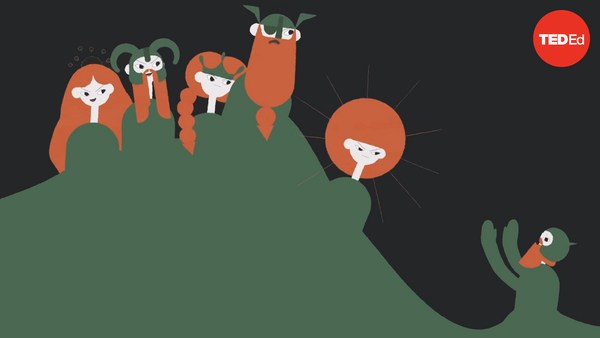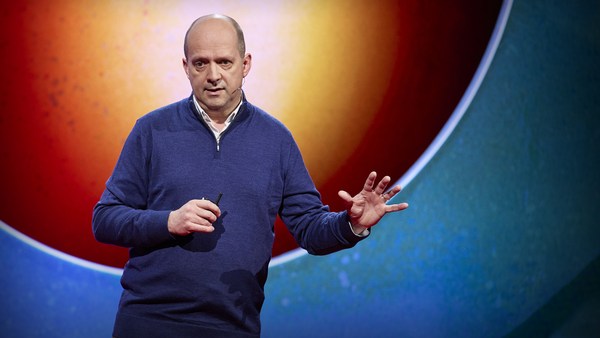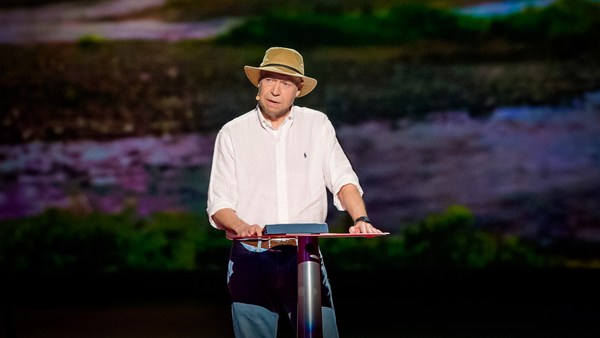Of all the apocalypse stories to survive the bumpy ride from pre-modernity to the present, the Old Norse tale of Ragnarök might seem the furthest from our reality. Its three straight years of winter seem more implausible with every record-breakingly hot summer we endure.
The European heat wave of 2018 hit Denmark especially hard. That summer, I was working on an archaeological dig with maybe some of the only people who felt happy about the relentless Sun. Dryness, I learned, has a way of revealing history hidden just below our feet. But drought threatens loss, too.
One weekend, my classmates and I traveled to a site near Copenhagen that some people believe to be the real-world setting of the Beowulf story. If we take the story for its word, then right nearby should be the lake where Beowulf would go to retrieve the head of his magical foe, Grendel. And there is a kind of marshy lake within walking distance of the site. But that summer it didn't look like much.
As a folklorist, I felt a premature sense of loss. If a lake were lost to drought, then so too would be everything the lake represents in the Beowulf story: chaos, danger, the unknown. Imagine if Loch Ness dried up. It's the possibility of what lurks beneath its surface that is so stirring, so much so that even if evaporation revealed the monster herself, something would still have been lost in the process.
The fact that dry land had managed to encroach on even the supposedly magical marsh felt to me like an obvious bad omen, a harbinger of more terrible heat and terrible loss to come. That's when one of the professors leading our dig told us the story of Ragnarök. Not the Ragnarök and three winters of some far-off future, but the Ragnarök that some scholars believe happened some 15 centuries ago. It would change the way that I understood folklore and introduce me to a new concept entirely, that of geomythology. The idea that in some stories of the supernatural, of gods and goddesses and of otherworldly apocalypse, we can find evidence of real climate change and catastrophe in human history, as well as evidence of human resilience.
They say the real Ragnarök began with a volcanic eruption or maybe a meteor strike or perhaps both in the same brief stretch of time. A possibility so unthinkable that in it, fact and fiction seemed to invert. Whatever it was, it cast a thick cloud of dust into the sky, a vast shadow across the Earth. No one in Europe, it seems, would see the Sun from early 536 CE until nearly the end of the following year. We know this from accounts from across the continent, especially the Mediterranean region, where Romans and Carthaginians reported a lengthy eclipse that brought with it freezing summers. Then came all the problems that accompany a failed harvest. Some scholars think it was the final blow that felled the Roman Empire.
Further north, where the written word had yet to arrive, the strangeness of this time is written in the land itself. Unusually narrow tree rings indicate a series of short, frigid summers that would repeatedly have killed crops across Scandinavia. Around the same time, villages were destroyed and graveyards abandoned, left silent after centuries and even millennia of use.
Even the gods weren't safe. By 600 AD, the solar deity who had long reigned supreme across Europe had seemingly been toppled from his throne. Archaeologists have found Scandinavian representations of the sacred figure defaced and destroyed, as if in revenge for the fact that no amount of sacrificial gold had managed to restore the sun.
That's where Thor, Loki and Odin come in. New gods would inherit this new world. Ragnarök is a story of the apocalypse, but also what comes after. Gods are killed but then reborn, and all the world is rejuvenated with them. We can imagine that such a cycle of rebirth felt right in a world that had died and yet somehow kept on living. These new gods are less straightforward than the Sun, more morally ambiguous, harder to pin down. You might recognize them with all their flaws from the Marvel films. They are flawed like people, flawed like those ancestors of the Old Norse who had been forced to commit and bear witness to terrible acts of survival. But they had survived.
It is this heritage that some scholars, especially the Swedish archaeologists Bo Gräslund and Neil Price, think we can read in and between the lines of the Ragnarök story. If so, Ragnarök joins the ranks of geomythological tales. Another example might be the Great Flood, which we see everywhere from Genesis to Gilgamesh. They are stories that remind us we are far from the first to experience environmental catastrophe and the complicated emotions that come with it: ambivalence, despair, fear, guilt, uncertainty, anger at ourselves and at the fragility of our world.
But these stories also remind us that people have overcome these challenges in the past, doing the unthinkable in order to survive, even, as in the case of those ancestors of the Old Norse, reinventing aspects of their culture that we, too, often treat as fixed. Realizing that the Ragnarök story might be rooted in reality has been revelatory to me. The fact that it would then have to have been passed down orally for hundreds of years before being written down, is a testament, I think, to the importance of its message then and now.
Folklore is more than a collection of stories. It is the preservation of culture as well as a lesson in preserving culture under some of the most challenging circumstances imaginable. Of course, it is not just about preserving culture. It's also a matter of changing culture. And geomythological tales remind us that people have done that in the past.
Just as the ancestors of the Old Norse felled gods and raised new ones in the effort to transform our world, we can and must muster the courage to topple gods of our own in the effort to transform our world now. In the perilous present, stories like Ragnarök invite us to think of ourselves in continuity with the past, which is to say, capable of the same cultural shifts and swerves of an earlier time. After all, if they could do it in the Iron Age, certainly we can now.
Thank you.
(Applause)





